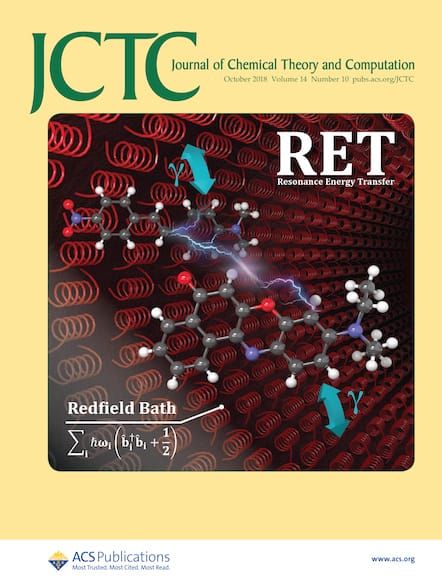基于机器学习的激发态反应力场:2-氟噻吩光解动力学建模的新方法。
IF 5.5
1区 化学
Q2 CHEMISTRY, PHYSICAL
引用次数: 0
摘要
缺乏准确而有效的激发态反应力场已成为阻碍光化学动力学发展的关键瓶颈。为了克服这个问题,我们开发了一种基于机器学习的激发态反作用力场(ML-ES-RFF),它实现了一种创新的分而治之策略。具体来说,该方法根据自由度在反应中的作用,系统地将自由度分为化学活性自由度和非活性自由度。对于表现出明显非调和性的主动dof,使用基于高级量子力学的神经网络势(QM-NNPs)构建势能面。相反,对于满足接近平衡态的调和近似的非活性自由度,势能面可以用常规分子力学力场来描述。这种多尺度方法同时实现了量子化学精度和显著的计算效率。为了验证该方法的可靠性,我们利用ML-ES-RFF研究了2-氟噻吩的非绝热动力学,成功地获得了光解过程的完整原子表征。我们的框架为研究复杂分子系统中的激发态过程建立了一个新的范式。本文章由计算机程序翻译,如有差异,请以英文原文为准。
Machine Learning-Based Excited-State Reactive Force Field: A New Approach for Modeling the Photodissociation Dynamics of 2-Fluorothiophenol.
The absence of accurate yet efficient excited-state reactive force fields has emerged as a critical bottleneck hindering advancements in photochemical dynamics. To overcome it, we develop a machine learning-based excited-state reactive force field (ML-ES-RFF) that implements an innovative divide-and-conquer strategy. Specifically, this approach systematically classifies degrees of freedom (DOFs) into chemically active and inactive ones based on their contributions in reactions. For active DOFs, which exhibit a significant anharmonicity, the potential energy surfaces are constructed using high-level quantum mechanics-based neural network potentials (QM-NNPs). In contrast, for inactive DOFs, which satisfy the harmonic approximation near equilibrium, the potential energy surfaces could be described by conventional molecular mechanics (MM) force fields. This multiscale methodology simultaneously achieves quantum chemical accuracy and remarkable computational efficiency. To validate the reliability of this approach, we applied it to study the nonadiabatic dynamics of 2-fluorothiophenol using ML-ES-RFF, successfully obtaining complete atomistic characterization of the photodissociation process. Our framework establishes a new paradigm for studying excited-state processes in complex molecular systems.
求助全文
通过发布文献求助,成功后即可免费获取论文全文。
去求助
来源期刊

Journal of Chemical Theory and Computation
化学-物理:原子、分子和化学物理
CiteScore
9.90
自引率
16.40%
发文量
568
审稿时长
1 months
期刊介绍:
The Journal of Chemical Theory and Computation invites new and original contributions with the understanding that, if accepted, they will not be published elsewhere. Papers reporting new theories, methodology, and/or important applications in quantum electronic structure, molecular dynamics, and statistical mechanics are appropriate for submission to this Journal. Specific topics include advances in or applications of ab initio quantum mechanics, density functional theory, design and properties of new materials, surface science, Monte Carlo simulations, solvation models, QM/MM calculations, biomolecular structure prediction, and molecular dynamics in the broadest sense including gas-phase dynamics, ab initio dynamics, biomolecular dynamics, and protein folding. The Journal does not consider papers that are straightforward applications of known methods including DFT and molecular dynamics. The Journal favors submissions that include advances in theory or methodology with applications to compelling problems.
 求助内容:
求助内容: 应助结果提醒方式:
应助结果提醒方式:


